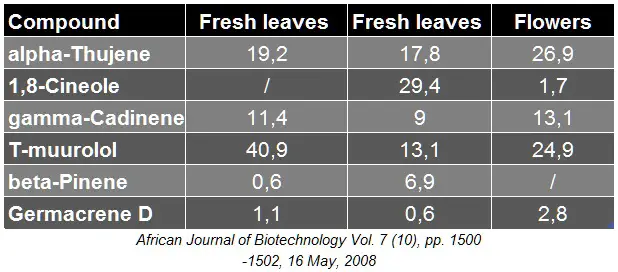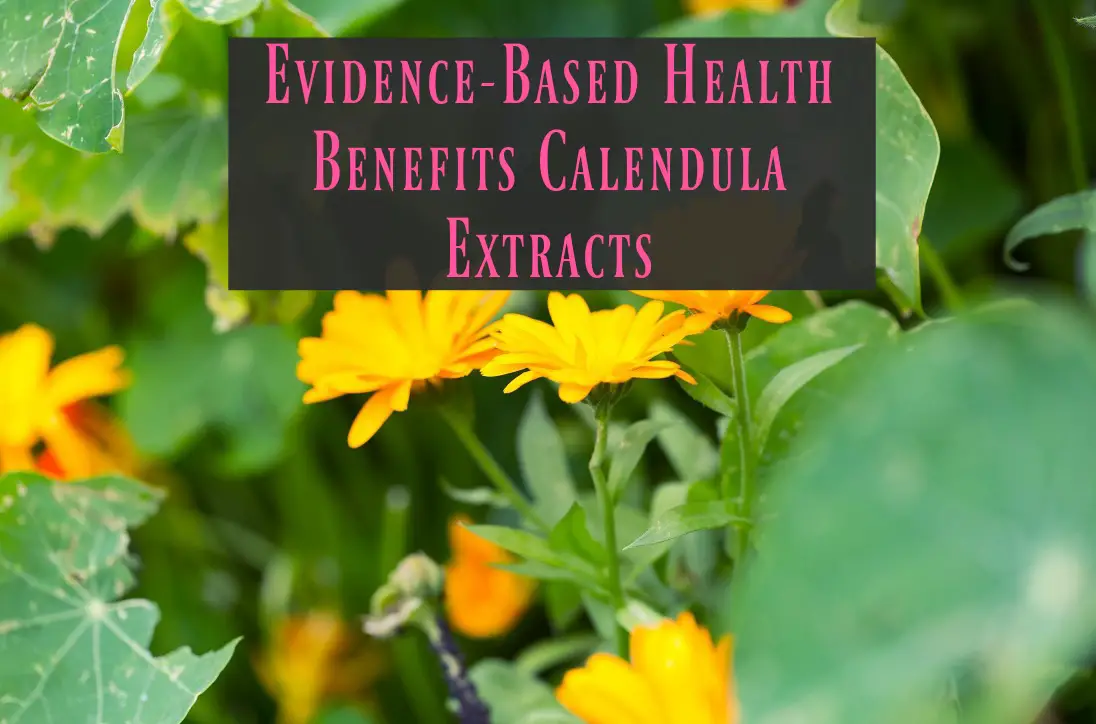Calendula is a genus of flowering herbaceous perennial and annual plants from the Asteraceae, or Daisy, family.
These are the first flowers that most of us learn to draw as children. The genus name comes from the Latin word for “little calendar,” or “little clock.”
The petals of what is commonly known as the marigold flower are edible and used fresh in salads or made into a dye to give color to certain cheeses.
According to the Bulletin of the History of Medicine, Calendula has been used medicinally since ancient times.(1)
Virgil (70BC-19BC) mentions it under the name of ” Calta ” in his Eclogues.
Essential oils of Calendula Officinalis were and still are used for its anti-tumor, anti-viral, anti-inflammatory, antioxidant, and wound healing effects.
Pharmacological effects
Unlike many natural therapies, there is a sound evidence base that backs up thousands of years of traditional use of the marigold plant in health and medicine.
The use of calendula has been cited in the British and United States Pharmacopeia up until 1905; the U.S. National Formulary as late as 1942, and in the American and National Dispensatories.
The drug is rarely if ever prescribed by clinicians today.
The active ingredients in Calendula extracts include:
- Triterpene oligoglycosides
- Saponins
- Flavonol glycosides
- Oleanane-type triterpene oligoglycosides
- Sesquiterpene glycoside
Researchers at the University of Fort Hare in Alice, South Africa, and the University of Lagos, Nigeria, measured the compounds in oils extracted from fresh leaves, dried leaves, and flowers of Calendula officinalis grown in Eastern Cape Province in South Africa.(2)
They discovered that the percentages of each chemical varied depending on whether it was located in flowers or leaves and whether the leaves were fresh or dried.
The chemical compositions of the leaves varied depending on whether they were fresh or dried.
Results of experiments on leaves are summarized in Table 1.

Calendula is also rich in quercetin, lutein, rutin, xanthophylls, ubiquinone, lycopene, and other antioxidants.
Quercitin has been shown to have a high level of antioxidant activity through in vitro studies on cultured liver cells, according to scientists at the Korea Institute of Science and Technology.(3)
What is oxidative stress?
Paradoxically, the act of breathing, which is essential to maintain life, produces highly reactive and byproducts called free radicals.
These unstable species contain an unpaired electron and rapidly disrupt cellular molecules in an effort to get paired up again.
Free radicals pack a lot of energy and damage proteins and even genes to cause various diseases and disorders such as diabetes.
When free radicals interfere with DNA, it can cause mutations. If one of these mutations is in a gene involved in cellular multiplication, it can lead to cancer.
Free radicals play a key role in the development of cellular inflammation, a major contributing factor in various conditions such as obesity, autoimmune disorders, cancer, arthritis, cardiovascular diseases and inflammatory bowel disease.
Chronic inflammation figures in a huge number of medical conditions including complications of diabetes, neurological disorders, tumor cell progression, cardiovascular and pulmonary diseases, bone/joint and chronic inflammatory conditions, autoimmune disorders, and metabolic and endocrine disorders.(4)
Fortunately, living organisms have ways of scavenging free radicals, but these mechanisms are sometimes overwhelmed by environmental factors such as:
- Illness
- Smoking
- Pollution
- Stress
- Ultraviolet radiation
- Poor diet
- Overexertion
- Certain drugs and other treatments
Disaster strikes when the production of free radicals consistently outpaces the rate of repair.
How does Calendula fight oxidative stress?
In 2015, a team of scientists from Flinders University in Australia demonstrated in vitro that Calendula flower extracts contained bioactive and free radical scavenging compounds that protected against oxidative stress.(5)
The effects were both time- and dose-dependent, two hallmarks of efficacy.(6)
A team of scientists led by P. Saini in the Department of Periodontics at the Indiana University School of Dentistry looked at the effects of calendula on collagen degradation and matrix-metalloprotease activity mediated by human gingival fibroblast (gum cells) in vitro.(7)
A two percent concentration of calendula completely wiped out MMP activity.
Calendula inhibited both HGF-mediated collagen degradation and MMP activity than a pure solution of quercetin alone, suggesting that more than one compound in the extract was at play here.
Recent and ongoing clinical trials using Calendula
Severe acute radiation skin reactions (ARSR) are a common side effect of adjuvant radiation therapy in patients with breast cancer.
Sharp in the Department of Oncology at the Karolinska Institute in Stockholm compared the effects of a commercial preparation of calendula cream with Essex cream, a non-perfumed aqueous cream in 420 patients.(8)
Women randomized to the Essex cream arm of the study had a 23 percent reduction in severe ARSR at follow-up compared to 19 percent in the calendula group.
Previously, Pommier (2004) in the Department of Radiation Oncology at Centre Leon Berard in France conducted a Phase III randomized clinical trial comparing calendula with Trolamine, a nonsteroidal anti-inflammatory drug (NSAID) for the prevention of ARSR in women undergoing radiotherapy for breast cancer.(9)
The occurrence of ARSR grade 2 or higher was significantly lower (41 percent) in the calendula group compared to participants in the Trolamine group (63 percent).
Commercially available calendula preparations
Calendula is available commercially as a cream, body oil, or lotion.
Dried flowers are also sold for use as a hot beverage.
Conclusion
Inflammation brought on by oxidative stress, an innate cellular process that we cannot escape from, contributes to a huge proportion of life-threatening and life-limiting diseases from skin conditions, to neurological diseases.
Our own bodies do their best to battle this process, but it is often overwhelmed by normal living.
Only by supplementing ourselves with a steady supply of antioxidants throughout the day can we possibly shift the balance in our favor.
Different sources of antioxidants contain different compounds and in varying concentrations.
Also, the part of the plant and subsequent commercial processing can alter the efficacy of antioxidants from a given source.
Calendula is one such source, and commercial preparations are readily available.
Leave Feedback: Was this article helpful?

